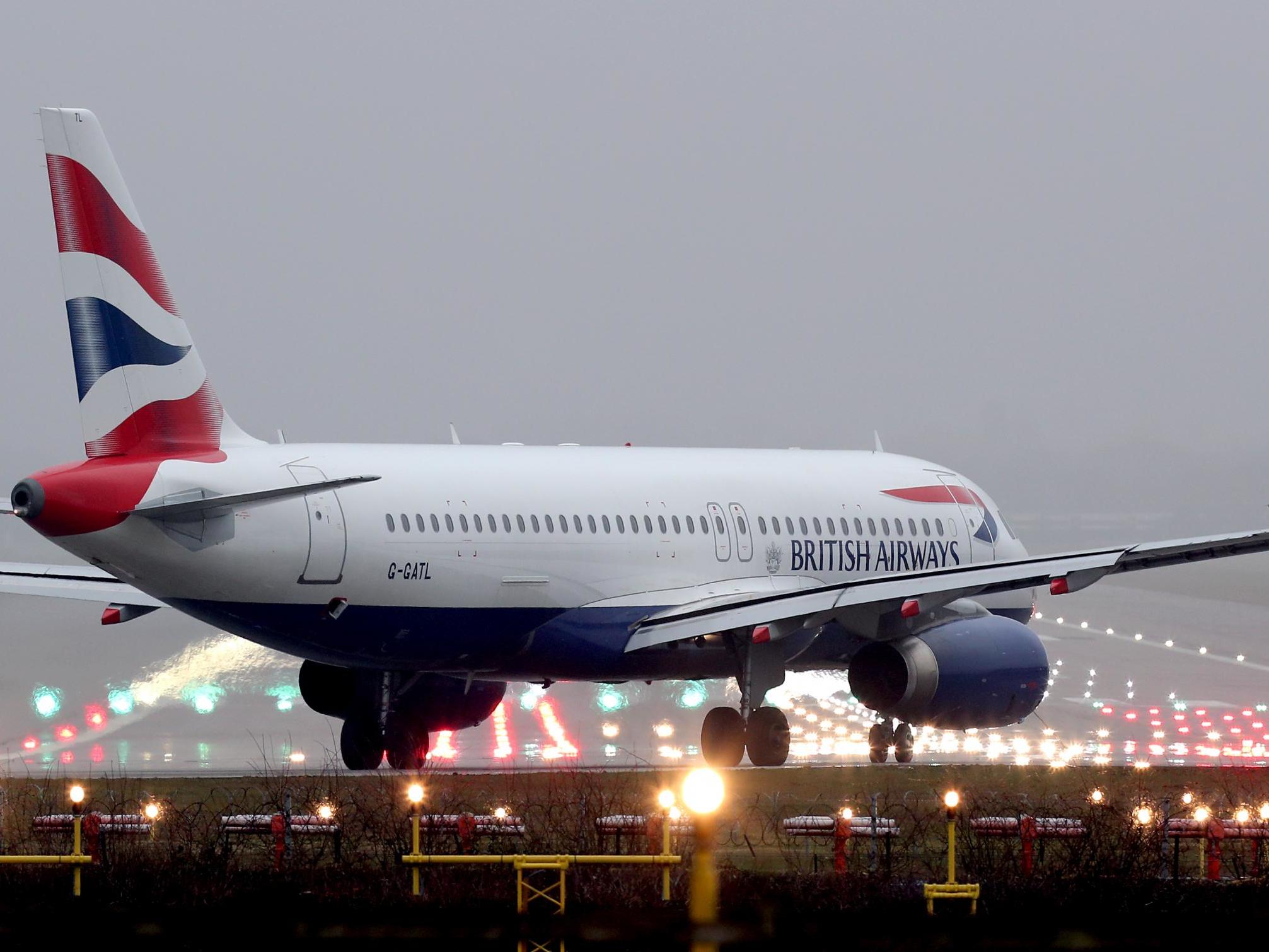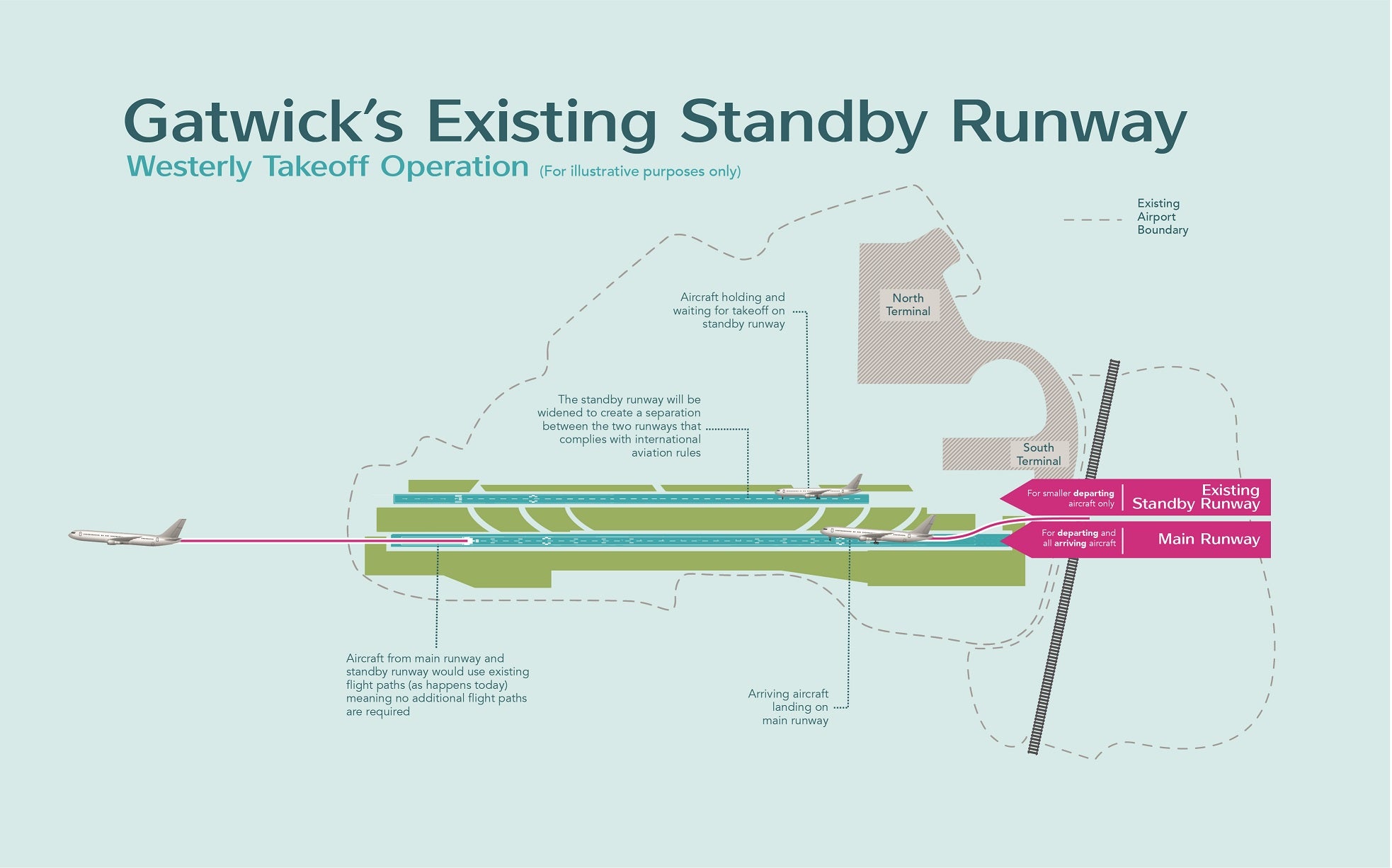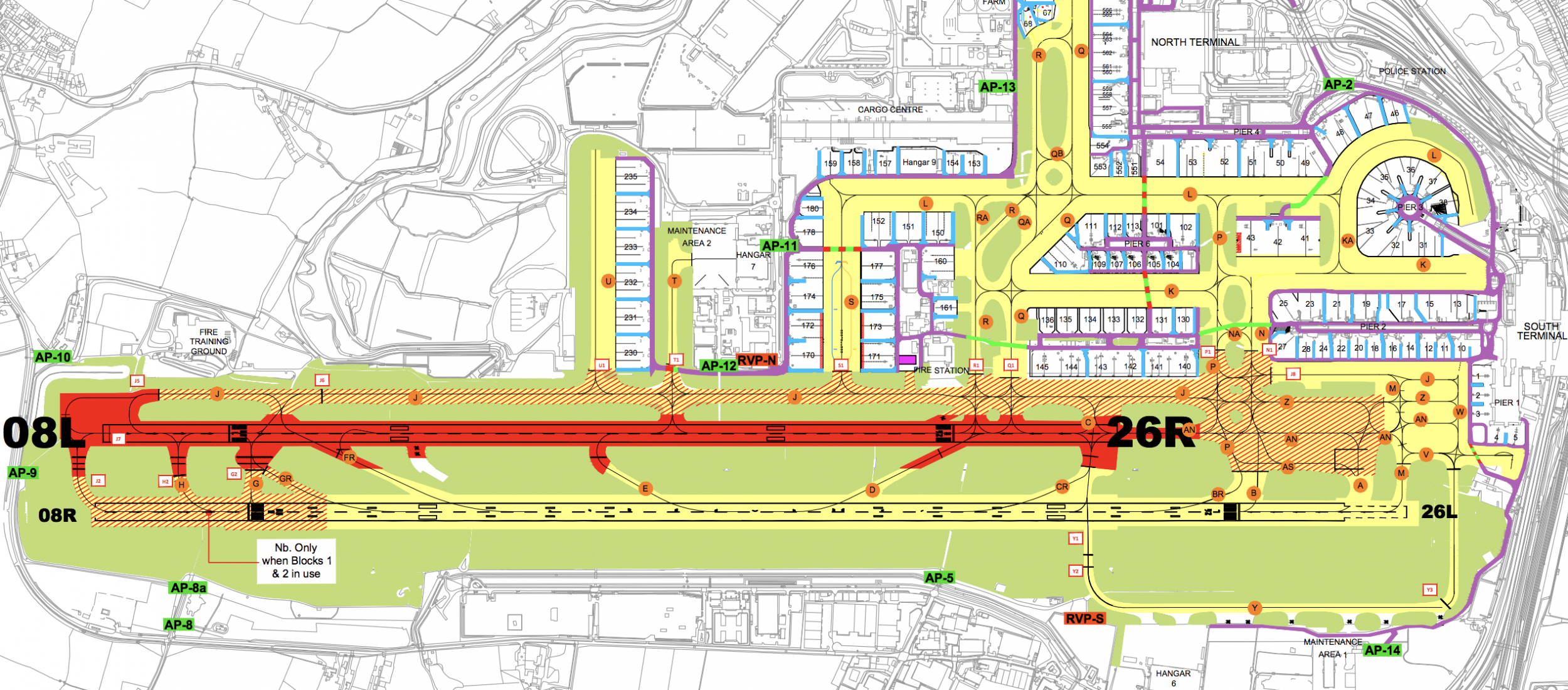Could Gatwick launch extra runway before Heathrow in the airport expansion race?
Answers to the key questions about a possible second runway at the Sussex airport

The government has chosen a third runway at Heathrow as the best solution to the chronic shortage of aviation capacity in South East England. A new runway northwest of the existing pair is said to cost £14bn.
But the proposals for Heathrow face multiple legal challenges, and a new runway will not open until 2026 at the earliest. Meanwhile the government has asked other airports in the region for proposals about how best to maximise use of existing infrastructure.
Gatwick is the second-busiest airport in the UK, and the busiest single-runway airport in the world in terms of flight movements. The Sussex airport is seeking permission to use its standby runway at the same time as its main runway, which it believes would lead to an increase in capacity of 20 to 30 per cent.
Where has Gatwick been hiding the second runway all these years?
Gatwick opened for fully commercial operations in 1936, as the world’s first modern airport with an integrated terminal and railway station. Since then all the expansion has been to the north of the main runway.
During the course of this expansion, a secondary runway was established just north of the main runway in 1979 – basically by upgrading a taxiway. It is used in emergencies when the main runway is blocked, and during scheduled maintenance of the main runway.
The main runway is known as 08R/26L, with the standby 08L/26R. The distance between the centre lines of the two runways is 198 metres. The International Civil Aviation Organization has published rules on “simultaneous operations on parallel or near-parallel instrument runways,” known as SOIR.
They establish a minimum distance between the centre lines of parallel runway as 210 metres “when the runways are intended for use by medium or heavy aeroplanes”.
So Gatwick’s runways are 12 metres too close?
Yes. But that problem could be solved by moving the centre lines further apart; one or both runways would need to be reconfigured. They are currently both 45 metres wide.
The necessary separation could be achieved by adding 12 metres to the south of the main runway, or 12 metres to the north of the standby runway, or a combination of both.
Given the current infrastructure, and the massive implications of disrupting the main runway, the preferred choice is to move the standby runway slightly north.
In order to avoid problems with the instrument landing system on the main runway, the “new” runway would be used only for departures. It is likely to be limited to narrow-bodied jets and propeller aircraft.

Why has Gatwick suddenly suggested using two runways?
The relentless growth of Gatwick and the airport’s failure to be awarded a second “proper” runway mean that new ideas are on the table. And crucially, a covenant banning use of both runways simultaneously expires next summer.
In 1979, the British Airports Authority and West Sussex County Council agreed that the emergency runway “shall not under any circumstances whatsoever be used for the taking off or landing of fixed wing aircraft” when the main runway is available for use.
The parties contracted that: “This agreement shall subsist for a period of forty years.” The deal expires on 13 August 2019. Meanwhile the airport is growing far faster than predicted.
In 2012, Gatwick said it expected to reach passenger numbers of 45 million per year by 2030. It has already exceeded that figure, 12 years early, reaching a rolling annual total of 45.6 million in September 2018.
Is this the same second runway proposal that was rejected by the government?
No. Gatwick has long insisted that it could build a “wide-spaced second runway” to the south of the existing main runway – and made that submission to the Davies Commission on airport expansion.
The proposal was rejected in favour of a third runway at Heathrow by the commission, a recommendation endorsed by the Department for Transport.
While Gatwick is now focused on internal expansion by bringing the standby runway into regular use, it aims to keep the land where expansion could take place.
Were this runway plan to go ahead, what work would be involved?
The planning process could take three years, and the construction working involved another two years. Adding an extra 12 metres of asphalt to the standby runway and painting a fresh line is the easy bit. The approach and runway lighting will need to be moved, and navigation databases rewritten. And that’s just to ensure safe operations.
At present the standby runway acts as the principle taxiway for the main runway. Take that away, and increase the number of movements by 20-30 per cent, and the logistics become very complex.
In addition, Gatwick is fairly stretched for departure gates at peak periods – though new gates are under construction, and a possible “Pier 7” extension of the North Terminal is under consideration.
Then there is the issue of surface access. A two-runway Gatwick could rapidly approach passenger numbers of 60 million per year, which the hard-pressed London-Brighton rail line and the M23 would find it difficult to bear. The proponents of the scheme say that recent improvements on the London-Brighton main line, which serves the airport, will provide enough capacity for public transport users.
How much would it cost – and who would pay?
Perhaps £500m - a small fraction of the £7.8bn that Gatwick said a “proper” second runway would cost. If it could generate an additional 15 slots per hour, the cost-per-slot represents extremely good value by the standards of other busy airports.
The cost would be borne initially by the airport owners, and recouped through charges on the increased number of flights and passengers.
What do pilots say?
The British Airline Pilots’ Association (BALPA) has welcomed the plan. The general secretary, Brian Strutton, said: “BALPA has always been in favour of extra capacity across the UK, and with Heathrow and Gatwick already running pretty much at full capacity, something needs to be done soon.
“If it is approved by the regulators and complies with safety rules, then by using its emergency runway Gatwick can provide much-needed capacity in the south east, which we would welcome.
“We also urge the government to hurry up with a final decision on Heathrow expansion, which we believe will be even more vital in a post-Brexit UK to support our thriving aviation industry.”
Is there local opposition?
Yes. While the number of people affected by increased flight movements is far lower for Gatwick than for Heathrow, the anti-expansion lobby is vocal. Communities Against Gatwick Noise Emission (CAGNE) is accusing of Gatwick seeking to introduce a second runway by “stealth”, saying: “This is simply betrayal of communities of Sussex, Surrey and Kent.
“With the proposed usage of the emergency runway Sussex, Surrey and Kent are now expected to see huge increases, day and night, from two runways.
“This is a second runway by the backdoor, how can communities ever trust Gatwick management again?”
The group has also expressed alarm about safety, saying: “We could see planes touching wings and planes having to cross runways to reach the piers, which are all safety concerns.”
What does Gatwick airport say?
“Airports are required to publish new master plans every five years, setting out their future growth plans and Gatwick has consistently confirmed it will do so before the end of this year. The draft plan will set out for our local communities, partners, airlines and stakeholders three possible growth scenarios, which we will then open up for views and feedback.

“In line with recent government policy, Gatwick has previously set out it is exploring how to make best use of its existing runways, including the possibility of bringing its existing standby runway into routine use. This would deliver an incremental increase in capacity that complements the expansion schemes of other airports across the South East.
“Safety and security are always our key priorities and any new development would be fully compliant with all international safety requirements.”
Is Heathrow bothered?
Apparently not. A Heathrow spokesperson told me: “Heathrow competes with EU Hubs like Schiphol and Charles de Gaulle Airports and is proud to play a unique role as the UK’s biggest port by value, connecting our country to over 200 destinations, including 78 long-haul services operating at least three times per week.
“These facts played a huge role in Parliament’s overwhelming vote to endorse the Airports Commission recommendation and approval of Heathrow expansion as Government Policy. We have always supported sustainable growth at other UK airports like Gatwick which serve a different purpose to Heathrow.”
What happens next?
Gatwick Airport’s chief executive, Stewart Wingate, has launched a 12-week consultation on the draft Master Plan.
The first hurdle will be getting approval from the Civil Aviation Authority for the plan. Next, West Sussex County Council would need to rubber-stamp the decision. If progress is made, legal challenges are likely from local residents and, possibly, rival airports.
If the plan goes ahead, the first simultaneous arrivals and departures are likely to take place in 2025 – at least a year ahead of Heathrow’s third runway opening.
Join our commenting forum
Join thought-provoking conversations, follow other Independent readers and see their replies
0Comments